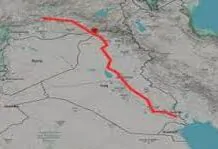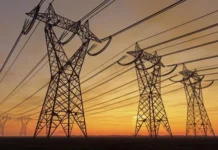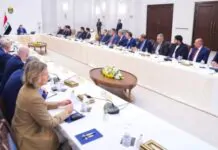Good Morning,
How BRICS Is Reshaping the Emerging Multipolar World
From Expansion to Internal Division: The Global South’s Strategic Realignment Faces Tests
The BRICS alliance is no longer a concept in transition—it is an evolving geopolitical force shaping the emerging multipolar world in real time. At the July 6–7 summit in Rio de Janeiro, BRICS officially expanded to 11 full members, strengthening its claim as the largest Global South alliance and advancing its ambition to create an alternative to Western-dominated global institutions.
With this expansion, BRICS now represents a powerful cross-continental coalition—but its path to becoming a cohesive global counterweight remains uneven.
Expansion Without Cohesion: Cracks in the Multipolar Blueprint
While the summit concluded with the 126-point Rio Declaration, internal challenges became evident. Notably, Chinese President Xi Jinping was absent, Russian President Vladimir Putin attended virtually, and top leaders from Egypt and Iran—both new members—were also no-shows.
“Many of the 180 working groups launched under Brazil’s BRICS presidency reportedly failed to meet. They signalled a bloc expanding in size but eroding in cohesion.” — Felipe Porto, Brazilian Foreign Policy Observatory
Despite these gaps, the declaration underscored a shared commitment to multilateralism, condemning military strikes and trade coercion—though it notably stopped short of naming the United States.
Historical Continuity: BRICS and the Legacy of the Global South
The ideological foundation of BRICS can be traced to the 1955 Bandung Conference, where newly independent nations articulated the “Ten Principles of Peace” that would shape the Non-Aligned Movement. Today’s BRICS nations claim to be the heirs of that Global South vision.
“BRICS is the heir to the Non-Aligned Movement… the first organization to unify Global South nations.”
— Brazilian President Luiz Inácio Lula da Silva
However, the bloc’s composition reveals contradictions. Four BRICS members are former Soviet states, absent from the historical Global South coalition. This hybrid identity reflects both the bloc’s potential and the fault lines within its expanding membership.
Trump’s Threats: Western Pushback Against the BRICS Challenge
The most immediate response to BRICS’s global ambitions came from U.S. President Donald Trump, who issued a sharp warning following the Rio summit:
“Any country aligning themselves with the Anti-American policies of BRICS will be charged an ADDITIONAL 10% tariff. There will be no exceptions.”
This escalation demonstrates how BRICS’s growing global influence is now seen as a direct economic and geopolitical threat to the U.S.-led international order. The clash between Western hegemony and South-South cooperation is entering a more aggressive phase.
“BRICS is designed to suit autocracies… used by authoritarian powers like China and Russia to promote an alternative world order.” — Natalie Sabanadze, Chatham House
She also pointed to a “growing rift” within BRICS—between the China-Russia axis and other members over the bloc’s strategic direction.
Can Southeast Asia Redefine BRICS’s Future?
The future trajectory of BRICS may hinge on its democratic members, particularly the four ASEAN nations that joined: Indonesia, Malaysia, Thailand, and Vietnam. These nations could play a pivotal role in shaping a less autocratic, more development-oriented alliance.
“As Southeast Asian countries deepen their engagement, the choices they make will help determine whether BRICS can evolve into a credible counterweight to Western dominance or falter under the weight of its own diversity.”
— M.A. Hossain, geopolitical analyst
This emerging multipolar world now features a bloc that reflects both the opportunity of expanded multilateralism and the challenge of maintaining cohesion across diverse political systems and interests.
Conclusion: BRICS at a Crossroads
The Rio summit proved that BRICS is growing in reach but not yet in unity. Its ambition to serve as the institutional core of a multipolar world faces major tests—from internal fragmentation to external confrontation. Yet, the bloc continues to assert itself as a strategic platform for Global South nations seeking more equitable global governance.
The coming months—especially with tariff threats from the U.S., growing digital currency initiatives, and regional realignments—will determine whether BRICS can transition from symbolic opposition to operational alternative.
@ Newshounds News™
Source: Watcher.Guru
~~~~~~~~~
Seeds of Wisdom Team RV Currency Facts Youtube and Rumble
Newshound’s News Telegram Room Link
Follow the Roadmap
Follow the Timeline
Seeds of Wisdom Team™ Website






